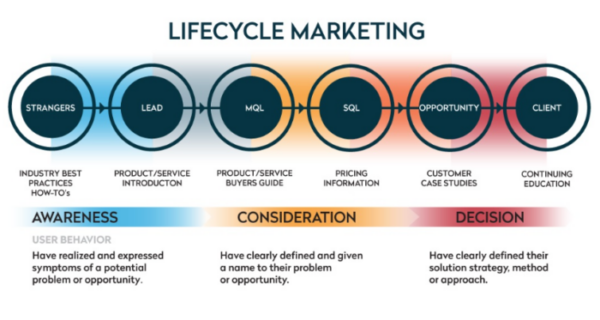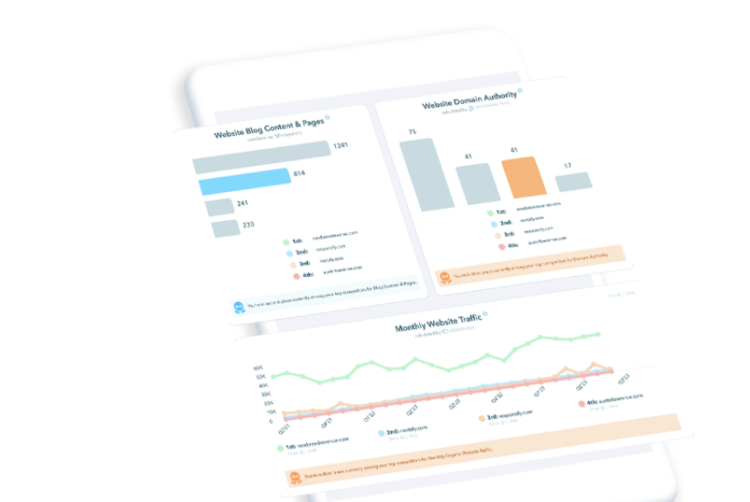 1,102 views
1,102 views 10445 Views
10445 Views  5 min read
5 min readB2B software sales is a never-ending process of prospecting, outreach, more outreach, closing sales, and repeating the actions over and over. One of the best ways to maintain your “sales pipeline” is by creating a consistent flow of qualified leads and managing your CRM. According to Technology Advice, companies that use pipeline monitoring experience 28% more development than those that do not. Ask any business, marketer, or sales professional what they want, and it’s not more leads—it’s more effective selling time with better leads that have high odds of converting into pipeline opportunities and customers. Here are ways to gradually grow your sales pipeline./strong> to increase your sales:
The phases of your B2B software sales pipeline need to be aligned with your buyer’s journey. The buyer’s journey is composed of three stages: Awareness: Your leads know they have a problem and are in the process of finding out what it is. You help the buyer clearly define their challenges by educating them with content through a blog and social media posts, whitepapers, videos, and more. Consideration: Your leads know their problem and are looking for solutions. The potential buyer is considering solutions to their pain or problem, which your product can answer. Decision: Your leads now understand how to solve their problem, and they have options they are weighing out. Buyers in the decision stage will look for the opportunity to contact sales, request a quote, or try a demo. The image below shows how leads progress through the lifecycle stages within the buying journey: 
With the buyer’s journey in mind, the phases of your B2B software sales process could be: Identify: A visitor on your site takes an action like submitting a form, attending a webinar, or asking questions in the comment area of your blog. You could also proactively prospect and build a list of ideal leads. Lead Nurture: This stage you want to start sharing informational and educational content through strategically crafted lead nurturing emails that are not sales-y but relevant to their issue. Use a monitoring software program to engage better leads who respond to specific topics. Engage: Starting a conversation around the challenges and objectives via email and phone calls can help you determine if the lead has an issue you can help them with. This will also help you build a better connection and enable you to set up a time to talk further. Discover: You need to ask questions and learn more about the lead’s unique challenges, objectives, and responsibilities. This phase is all about understanding, not selling. Prepare a Presentation of a Tailored Solution: Create a customized presentation based on what you’ve learned about the prospect. Make sure to use their language—in their own words. 62% of consumers expect personalization from the brands they work with. Those who fail to deliver will lose customers. Suggest a Tailored Solution: Your potential customers agree to meet with you by phone or in person to review what they need and a possible solution. Agreement Review: When you get a lead to request your offer, you should prepare an agreement to go through and eliminate any additional questions or concerns. Close: Here, your customer signs on the dotted line and makes a payment.
You need to set your sales team up for success by developing sales objectives. You need to have specific goals for every phase of the sales pipeline. This will encourage your sales team and help boost the chances for success. For example, you can aim to close 120 sales a year. This equals 10 a month. For sales objectives to be effective, SMART goals are often used—Specific, Measurable, Attainable, Relevant, and Timely. Inbound sales focus on the needs of the buyer, rather than the seller. It requires an understanding of the buyer’s plans, goals, and challenges.
Once you have identified the phases of your sales pipeline and developed your objectives, make a sales dashboard to help track your development. This control panel should be updated daily with important information on your sales pipeline. You can tell where you are and your strategy with just a glance. You can develop a dashboard using a spreadsheet or an innovative CRM software app like HubSpot. The dashboard should include the following: Top priorities: What projects and tasks are the most important? Schedule: Does my schedule reflect my priorities? Project goals: How many proposals do I need to send each month? Revenue goals: What movement am I making toward my revenue targets? Leads: Do I have enough leads to fill my pipeline?
According to sales master Colleen Francis, many salespeople find themselves caught up in the “sales trap.” This happens when they spend too much time making sales and little to no time finding new leads. Over time, this creates a dry pipeline. To prevent this, you need to constantly be filling your pipeline. Here are some ways to do that: Buying lists: Some salespeople find these lists unreliable and a little off-target, but they can often help find leads. List-building services: Like buying lists, these can be hit-or-miss, but specialized services can contribute good names to your list. Build your own list: With specialist networks like LinkedIn, you can build a list of ideal companies and individuals who work there. Then, use services to find their email or phone number to get more qualified leads. Inbound lead generation./strong>: Getting leads to come to you is the best scenario. These leads know your brand and have some passion for your remedy. Their rate of interest could vary from coming to your site, opening up an email, downloading premium content, asking for a trial, or submitting a form. To learn more about producing leads online, read this short article, “Generating Leads Online: The Birds and the Bees.”
As you send proposals and close sales, take time to find new contacts and fill the top of the funnel. This should be a daily job to ensure the pipeline is always moving. Determine how many leads you need to meet your sales targets in the engagement phase. Sales monitoring software can help you check on the activity of leads in your pipeline.
If a potential customer is disinterested or stays in the same phase for too long, it’s time to reevaluate them. Cleaning your pipeline will help you spend more time on your best leads. You should also make sure your information is up-to-date. For example, if a prospect leaves your target company, remove them from the pipeline and find a new contact at the company. Check your goals frequently to make sure they are attainable.
Developing a steady sales pipeline can be tricky for even the most effective salespeople. Understanding your leads and where they are in the buyer’s journey will help you create a well-flowing pipeline. This process is part of a more significant body of marketing and sales strategies called the inbound methodology. It can be hard to do this all alone, in any case. Responsify partners with B2B technology sales and business development pros to offer strategy, support, and help in develop an Inbound leads pipeline. By working together, we help marketing and salespeople bring in new site visitors and convert them into leads and customers. We’ve helped plenty of sales pros include Inbound in their sales process. Don’t hesitate to schedule a free strategy session to help you assess your methods and improve your pipeline.
